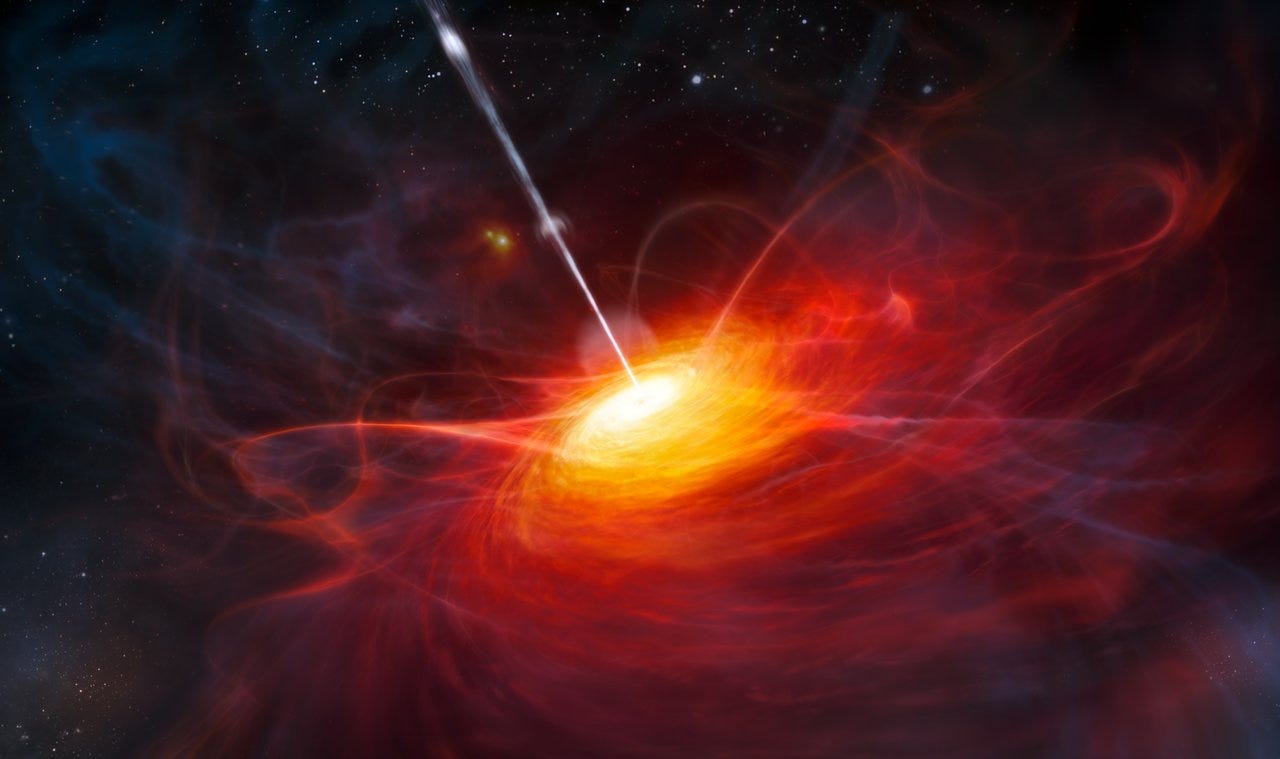ESOAstronomers at the Very Large Telescope (VLT) recently found six galaxies orbiting a black hole in the ancient Universe. The galaxies orbiting this supermassive black hole (SMBH) are seen as they appeared when the Universe was just 900 million years old. This collection of galaxies, centered around the quasar SDSS J1030+0524, is the oldest, closest galactic cluster ever seen orbiting a supermassive black hole.
Supermassive black holes are found near the center of every galaxy, including the Milky Way. Those galaxies containing extremely energetic black holes can come alight as quasars.
The new study reveals the galaxies are huddled around a behemoth black hole, 250 times more massive than the SMBH at the center of the Milky Way galaxy. Encompassing this system, a vast spider web of gas and dust, 300 times the size of the Milky Way, stretches across space.
“The cosmic web filaments are like spider’s web threads. The galaxies stand and grow where the filaments cross, and streams of gas — available to fuel both the galaxies and the central supermassive black hole — can flow along the filaments,” said Marco Mignoli, astronomer at the National Institute for Astrophysics (INAF) in Bologna, Italy.
The first black holes in the Universe likely formed from the collapse of the earliest stars. However — the question became how these black holes could have grown in size from a few dozen solar masses to a billion times the mass of our Sun in only a few hundred million years.
This new finding suggests the transfer of material along gaseous filaments could supply enough material to grow these enormous bodies in a (cosmologically) short period of time. Through other similar structures, the largest black holes could quickly form within clouds of gas and dust feeding the ravenous void, researchers speculate.
“Our finding lends support to the idea that the most distant and massive black holes form and grow within massive… dark matter halos in large-scale structures,” researchers described in an article detailing their study, published in Astronomy & Astrophysics.
The next question one might (nay, should) ask is, how did the filaments form? The gravitational influence of dark matter has pulled on “ordinary” matter since soon after the Big Bang. Researchers believe this influence is what first pulled matter into the filaments seen in this recent finding, providing the black hole with a feast of gas and dust.
These galaxies are among the faintest that can be seen by the current generation of telescopes.
The Extremely Large Telescope, being developed as part of the European Southern Observatory, will be capable of seeing fainter, more distant galaxies in the ancient Universe.
This article was originally published on The Cosmic Companion by James Maynard, founder and publisher of The Cosmic Companion. He is a New England native turned desert rat in Tucson, where he lives with his lovely wife, Nicole, and Max the Cat. You can read this original piece here.
Astronomy News with The Cosmic Companion is also available as a weekly podcast, carried on all major podcast providers. Tune in every Tuesday for updates on the latest astronomy news, and interviews with astronomers and other researchers working to uncover the nature of the Universe.

